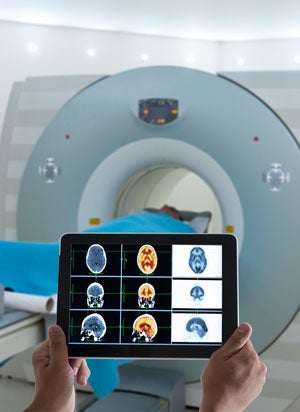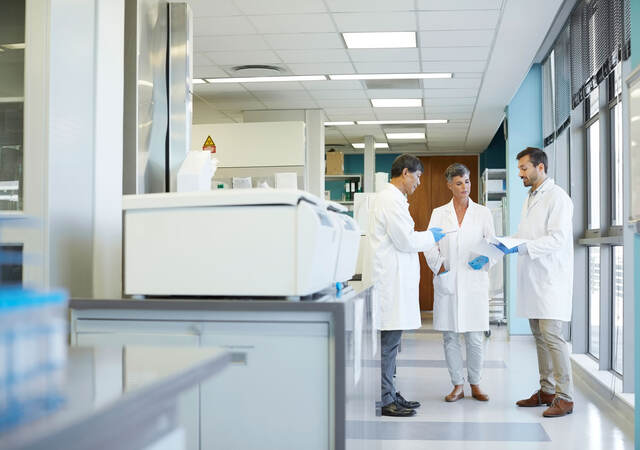
Software development lifecycle (SDLC)
A structured software development lifecycle (SDLC) supports increased software safety, reliability and compliance with international standards such as IEC 62304 and IEC 82304, which are critical for regulatory approvals. Understanding SDLC activities is therefore critical for medical device manufacturers when laying the groundwork for obtaining global market access.
How does compliance with IEC 62304 and IEC 82304 facilitate global market access for medical device software?
Compliance with IEC 62304 and IEC 82304 is essential for medical device software manufacturers seeking global market entry. IEC 62304 sets the lifecycle requirements for medical device software, focusing on development, maintenance and risk management to enhance safety. IEC 82304 complements this by covering health software outside of medical devices, emphasizing safety aspects like usability and data security. These standards are internationally recognized for software safety and quality, providing a clear framework for regulatory approval across different regions, including Europe and the U.S.
By aligning software development processes with these standards, manufacturers can navigate the regulatory landscape more effectively, supporting faster market access and broader acceptance.
Challenges with aligning SDLC and regulatory requirements
Aligning SDLC processes with global regulatory expectations presents various challenges. The need to integrate risk management throughout the software development lifecycle necessitates planning and documentation, demanding significant resources. Further, the pace of technological advancements means that regulatory standards may not always be in sync with new technologies, requiring manufacturers to anticipate future changes. Keeping development teams up-to-date with these standards adds another layer of complexity.
Despite these challenges, effective alignment is crucial for compliance, requiring a strategic approach to manage the balance between innovation, safety and regulatory adherence.
Agile SDLC processes
Manufacturers should adopt a flexible SDLC framework that allows for continuous improvement and integration of new technologies. Staying informed about changes in regulatory standards and incorporating feedback loops into the SDLC can help maintain ongoing compliance.
Emergo is equipped to help you achieve regulatory compliance in global markets
Here's how we can help you with SDLC compliance:


Comprehensive assessment
Begin with a comprehensive assessment to lay a solid foundation for compliance. This includes an initial tailored road map to navigate the IEC 62304 and IEC 82304 standards effectively.

SOP software development support
SOP software development support, providing strategic recommendations to align your practices with IEC standards and aligning your documentation to regulatory expectations.

Software development review
We review and enhance your software development plans, incorporating essential project phases, risk management strategies and regulatory considerations to help you reach your compliance goals.

Software architecture review
Review your software architecture and detailed design documentation for alignment with IEC 62304 standards, laying a foundation for development.

Verification and validation assessment
Assess your verification and validation plans, and provide guidance to meet IEC standards.

Document review
Perform document reviews and compile submission dossiers for regulatory approval.

SRS document drafting advice
Advice on drafting SRS documents, essential for the software's design, development and validation processes.
Emergo's services are flexible, designed to meet you at any stage of your product's lifecycle. Whether starting in the early stage of development or optimizing and remediating existing processes, our customized approach addresses your specific needs.
Software development lifecycle training
Emergo by UL offers software development lifecycle (SDLC) awareness training for medical device manufacturers regarding IEC 62304 and IEC 82304 standards.
Common questions regarding regulatory SDLC requirements
What are the basic requirements of IEC 62304?
IEC 62304 mandates a lifecycle process for medical device software development, emphasizing risk management, clear documentation of development processes, software maintenance and problem resolution. The standard requires defining the software development lifecycle and so that that all phases, from planning to release, meet safety standards.
How does IEC 82304 differ from IEC 62304?
IEC 82304 specifically addresses the requirements for health software products (software intended to be used for one or more medical purposes without being part of a hardware medical device), focusing on product safety, including usability, data integrity and privacy aspects, complementing IEC 62304 which focuses on the lifecycle processes of medical device software.
What initial steps should a medical device manufacturer take to comply with these standards?
To start, manufacturers should examine the details of IEC 62304 and IEC 82304, and identify via gap analysis where their existing processes need to be adjusted. Manufacturers should also adopt SDLC approaches with robust risk management and quality assurance components.










